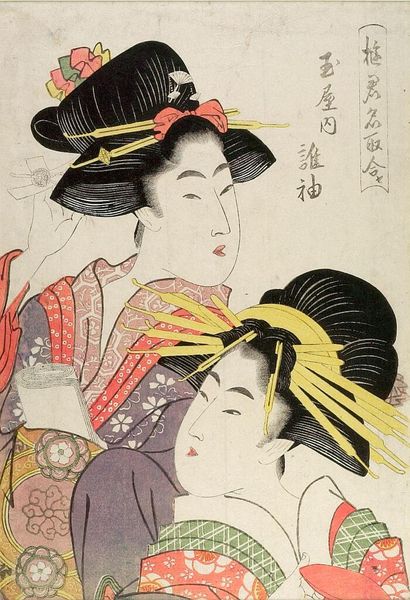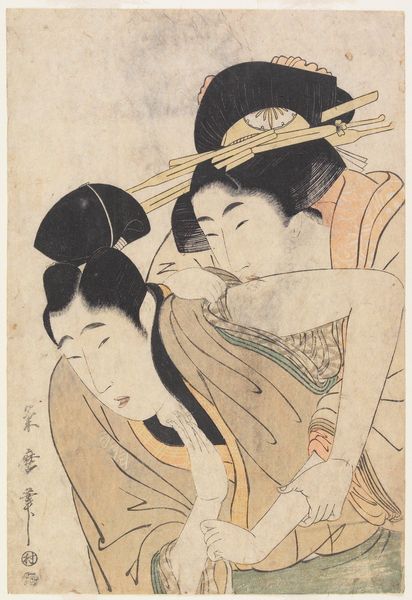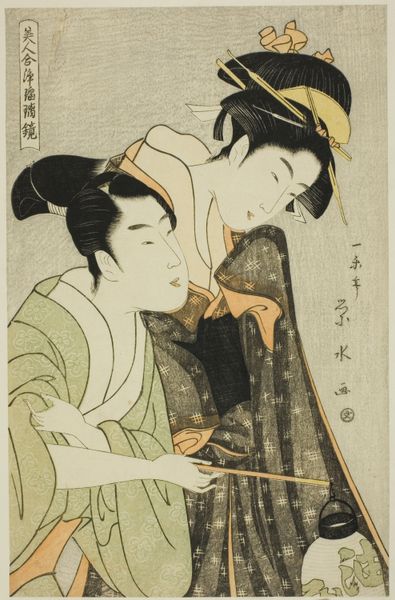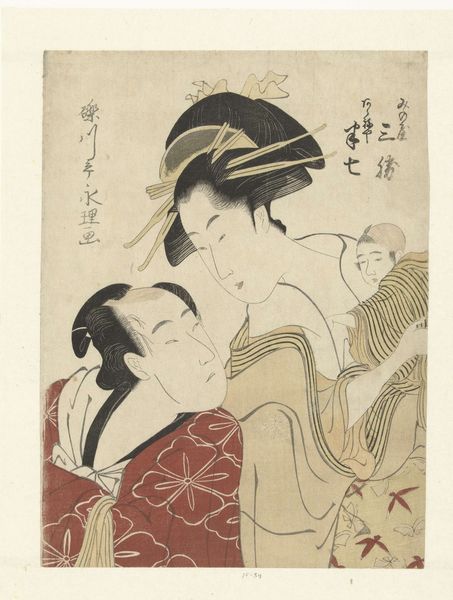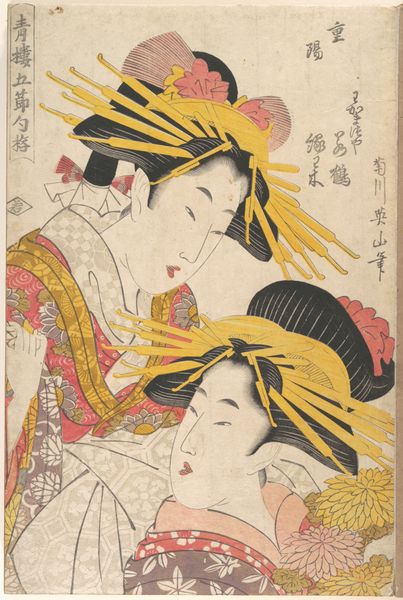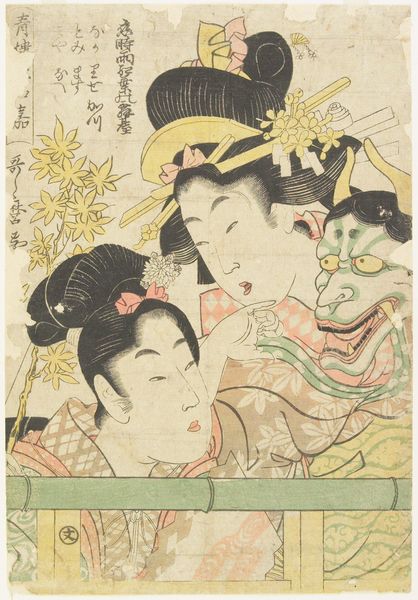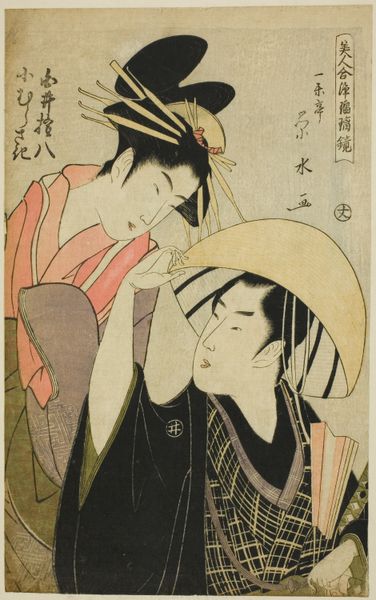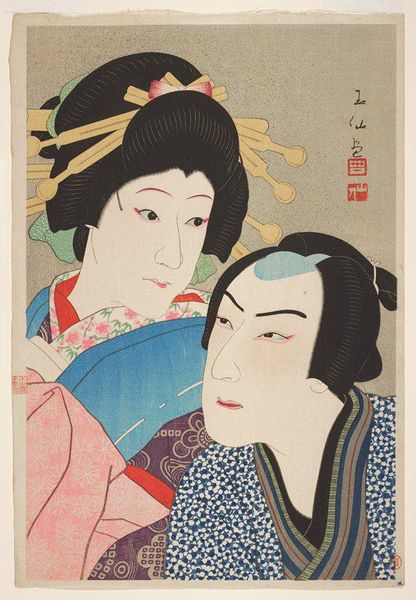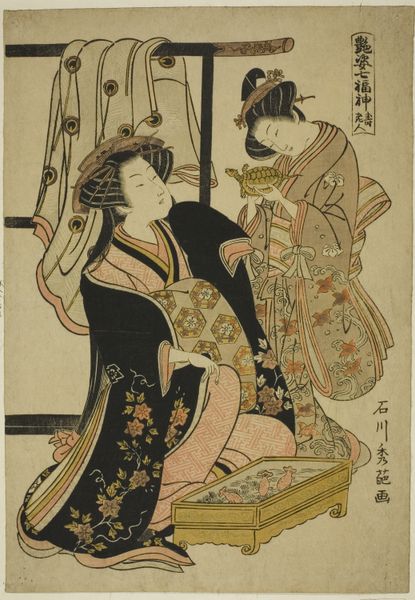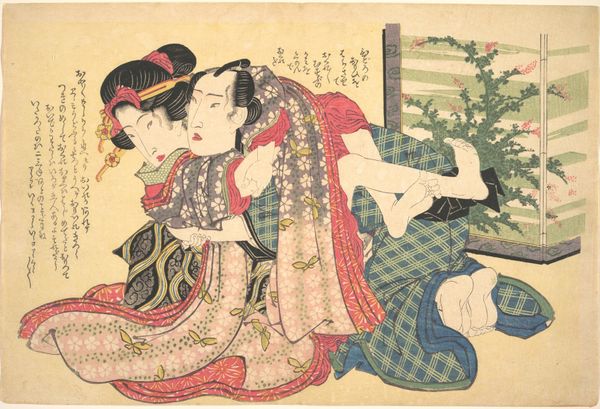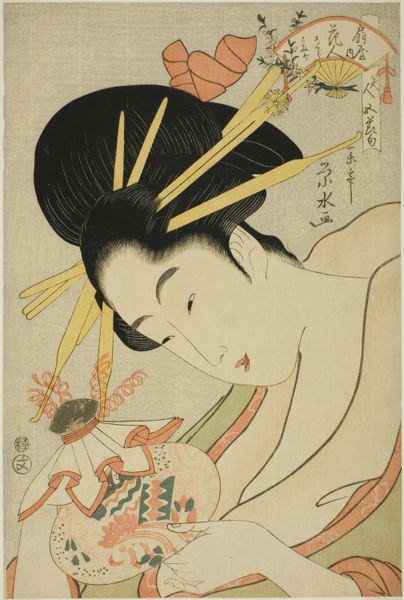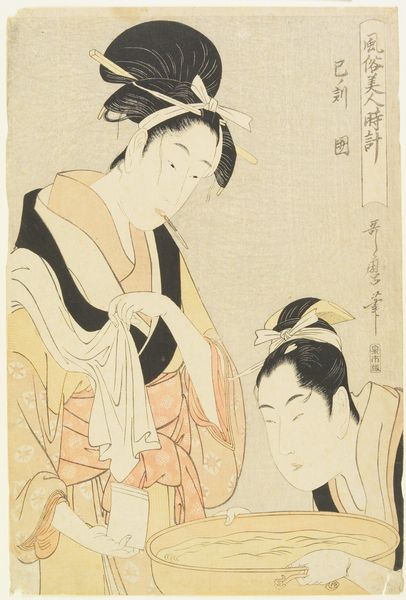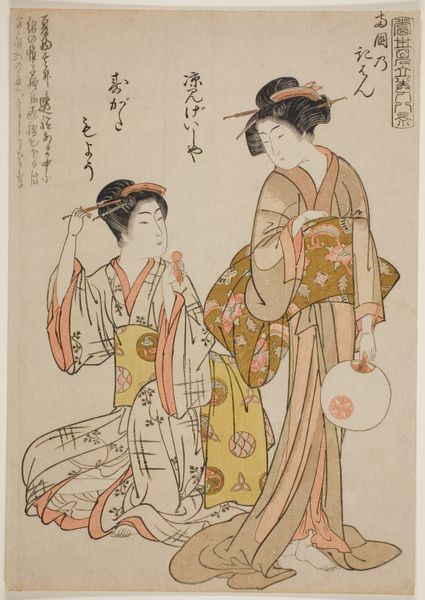
The Prostitutes Hanaōgi and Takigawa of the Ōgiya House c. 1805
0:00
0:00
print, paper, ink
#
portrait
# print
#
asian-art
#
ukiyo-e
#
japan
#
paper
#
ink
#
genre-painting
#
erotic-art
Dimensions: 14 1/8 × 9 7/8 in. (35.9 × 25.1 cm) (image, sheet, vertical ōban)
Copyright: Public Domain
Curator: Utamaro Kitagawa's circa 1805 woodblock print, "The Prostitutes Hanaōgi and Takigawa of the Ōgiya House," part of the Ukiyo-e tradition, is a fascinating example of Japanese portraiture. Editor: Two geishas! My first thought: intense vulnerability. Their closed eyes and soft expressions hint at a hidden world, and what’s with all those yellow hair ornaments? They're like sun rays, drawing you into their private sphere. Curator: Exactly! These women were celebrities of their time, trendsetters even. Utamaro, as one of the greatest Ukiyo-e masters, elevates them through very specific visual cues, including the ornate kanzashi—the hair ornaments you mentioned. They denote status within the pleasure districts. Editor: Status. Of course. It is kind of wild, isn't it? That someone’s "worth" could be displayed through golden sticks in their hair, especially since sex work carries such loaded symbolism... This image presents such calm beauty; what do you think that serenity hides? Curator: A complex tapestry, without doubt. The closed eyes might signal contemplation, maybe even resignation to their roles. But also think of the composition: the intimate proximity, the careful rendering of fabrics. Ukiyo-e, meaning "pictures of the floating world," was preoccupied with ephemeral pleasures, celebrating them even as it acknowledged their transience. Editor: I get that. Like catching a butterfly, pinning it, labeling it...then wondering what you've stolen from it. And the faces themselves are so serene, untouched almost...like masks. So they weren’t exactly "erotic" even if deemed erotic today, huh? More...icons of desire, framed in very strict cultural parameters? Curator: You’ve hit upon the crux of it. Erotic, yes, but presented through a very particular lens of refinement. These prints, mass-produced, fulfilled very specific cultural functions, offering an idealized image of female beauty but also subtly reinforcing societal hierarchies. Editor: An intersection, then, between art, commerce, and societal expectation...It’s all so consciously styled that you almost miss the inherent sorrow of an objectified life. Almost. Okay, I’m haunted. Curator: A powerful encapsulation of fleeting beauty against a backdrop of rigid convention, I think. Editor: It certainly gives you pause for thought about value and worth, beauty, and social function. Pretty intense.
Comments
No comments
Be the first to comment and join the conversation on the ultimate creative platform.
